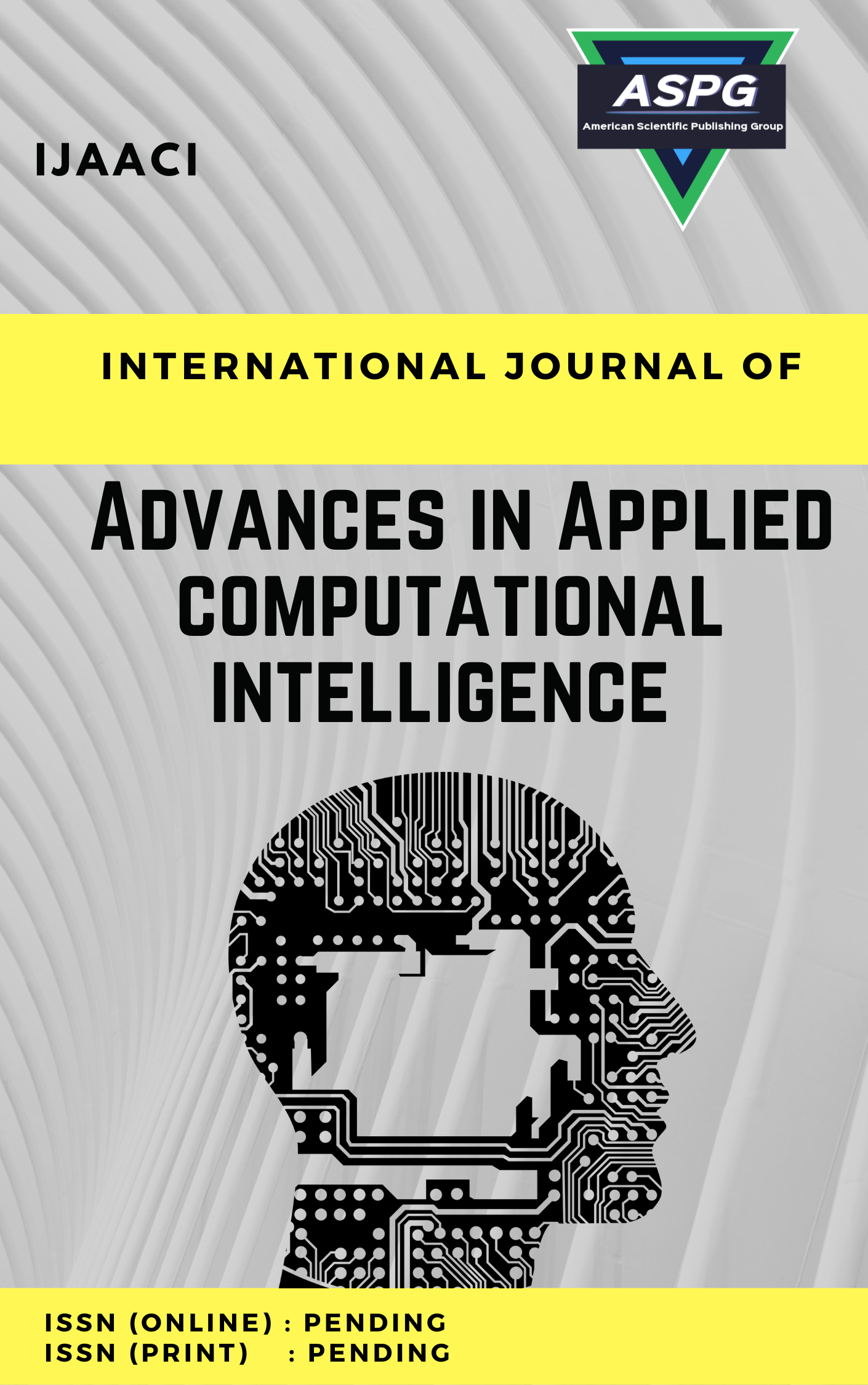

Volume 4 , Issue 1 , PP: 47-53, 2023 | Cite this article as | XML | Html | PDF | Full Length Article
Ahmed Abdel-Rahim EI-Douh 1 * , Ayman H. Abdel-aziem 2
Doi: https://doi.org/10.54216/IJAACI.040105
Emerging technology, known as digital twin (DT) is surrounded by numerous promises and potentials to influence the future of industries and society as a whole. A DT is a system of systems that goes much beyond conventional computer simulations and analyses. It is the process of replicating all of the components, processes, and dynamics of a physical system into their corresponding digital counterparts. Both the physical and digital systems coexist in the same space, sharing all of the inputs and activities via the use of real-time data transfers and the exchange of information. The DT provides a platform for testing and assessing complicated systems, which is not achievable with conventional simulations or modular assessments. This is one of the many benefits offered by the DT. However, the development of this technology faces many challenges, such as the complexities in effective communication and data accumulation, the lack of data available to train machine learning (ML) models, the lack of processing power to support high-fidelity twins, the high need for collaboration between different fields of study, and the absence of standardized development methodologies and validation measures. Due to the fact that DTs are still in the early phases of development, little documentation exists. In this light, the purpose of this survey article is to make attempt to address the significant facets involved in the actualization of the technology. The most important enabling technologies, constraints, and opportunities associated with DTs are discussed. The article presents an in-depth analysis of the technology, includes a list of design aims and objectives, analyses research and commercial advances, details the applications of the technology, and identifies obstacles and constraints associated with design across many sectors.
Digital twin , Physical twin , Artificial intelligence , Machine learning , Virtual reality , Augmented reality.
[1] M. Grieves and J. Vickers, “Digital Twin: Mitigating Unpredictable, Undesirable Emergent Behavior in Complex Systems BT - Transdisciplinary Perspectives on Complex Systems: New Findings and Approaches,” F.-J. Kahlen, S. Flumerfelt, and A. Alves, Eds., Cham: Springer International Publishing, 2017, pp. 85–113. doi: 10.1007/978-3-319-38756-7_4.
[2] B. R. Barricelli, E. Casiraghi, and D. Fogli, “A Survey on Digital Twin: Definitions, Characteristics, Applications, and Design Implications,” IEEE Access, vol. 7, pp. 167653–167671, 2019, doi: 10.1109/ACCESS.2019.2953499.
[3] R. Minerva, G. M. Lee, and N. Crespi, “Digital Twin in the IoT Context: A Survey on Technical Features, Scenarios, and Architectural Models,” Proc. IEEE, vol. 108, no. 10, pp. 1785–1824, 2020, doi: 10.1109/JPROC.2020.2998530.
[4] A. Rasheed, O. San, and T. Kvamsdal, “Digital Twin: Values, Challenges and Enablers From a Modeling Perspective,” IEEE Access, vol. 8, pp. 21980–22012, 2020, doi: 10.1109/ACCESS.2020.2970143.
[5] D. M. Botín-Sanabria, A.-S. Mihaita, R. E. Peimbert-García, M. A. Ramírez-Moreno, R. A. Ramírez-Mendoza, and J. de J. Lozoya-Santos, “Digital Twin Technology Challenges and Applications: A Comprehensive Review,” Remote Sensing, vol. 14, no. 6. 2022. doi: 10.3390/rs14061335.
[6] M. Xia, H. Shao, D. Williams, S. Lu, L. Shu, and C. W. de Silva, “Intelligent fault diagnosis of machinery using digital twin-assisted deep transfer learning,” Reliab. Eng. Syst. Saf., vol. 215, p. 107938, 2021, doi: https://doi.org/10.1016/j.ress.2021.107938.
[7] X. Liu et al., “A systematic review of digital twin about physical entities, virtual models, twin data, and applications,” Adv. Eng. Informatics, vol. 55, p. 101876, 2023, doi: https://doi.org/10.1016/j.aei.2023.101876.
[8] F. Tao, H. Zhang, A. Liu, and A. Y. C. Nee, “Digital twin in industry: State-of-the-art,” IEEE Trans. Ind. informatics, vol. 15, no. 4, pp. 2405–2415, 2018.
[9] S. Boschert and R. Rosen, “Digital twin—the simulation aspect,” Mechatron. Futur. Challenges Solut. Mechatron. Syst. their Des., pp. 59–74, 2016.
[10] M. Singh, E. Fuenmayor, E. P. Hinchy, Y. Qiao, N. Murray, and D. Devine, “Digital twin: Origin to future,” Appl. Syst. Innov., vol. 4, no. 2, p. 36, 2021.
[11] S. Haag and R. Anderl, “Digital twin–Proof of concept,” Manuf. Lett., vol. 15, pp. 64–66, 2018.
[12] M. Liu, S. Fang, H. Dong, and C. Xu, “Review of digital twin about concepts, technologies, and industrial applications,” J. Manuf. Syst., vol. 58, pp. 346–361, 2021.
[13] L. Wright and S. Davidson, “How to tell the difference between a model and a digital twin,” Adv. Model. Simul. Eng. Sci., vol. 7, no. 1, pp. 1–13, 2020.
[14] I. Errandonea, S. Beltrán, and S. Arrizabalaga, “Digital Twin for maintenance: A literature review,” Comput. Ind., vol. 123, p. 103316, 2020.
[15] Y. Wu, K. Zhang, and Y. Zhang, “Digital twin networks: A survey,” IEEE Internet Things J., vol. 8, no. 18, pp. 13789–13804, 2021.
[16] Q. Qi et al., “Enabling technologies and tools for digital twin,” J. Manuf. Syst., vol. 58, pp. 3–21, 2021.
[17] B. Schleich, N. Anwer, L. Mathieu, and S. Wartzack, “Shaping the digital twin for design and production engineering,” CIRP Ann., vol. 66, no. 1, pp. 141–144, 2017.
[18] E. VanDerHorn and S. Mahadevan, “Digital Twin: Generalization, characterization and implementation,” Decis. Support Syst., vol. 145, p. 113524, 2021.
[19] C. Semeraro, M. Lezoche, H. Panetto, and M. Dassisti, “Digital twin paradigm: A systematic literature review,” Comput. Ind., vol. 130, p. 103469, 2021.
[20] F. Tao, B. Xiao, Q. Qi, J. Cheng, and P. Ji, “Digital twin modeling,” J. Manuf. Syst., vol. 64, pp. 372–389, 2022.
[21] D. Jones, C. Snider, A. Nassehi, J. Yon, and B. Hicks, “Characterising the Digital Twin: A systematic literature review,” CIRP J. Manuf. Sci. Technol., vol. 29, pp. 36–52, 2020.